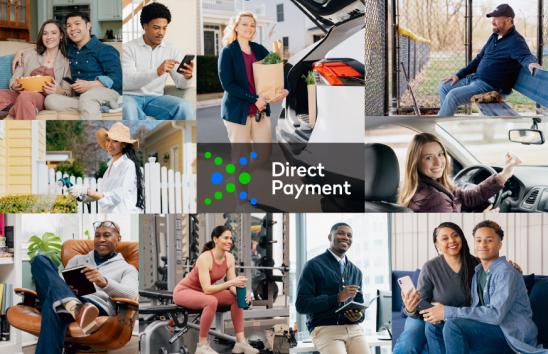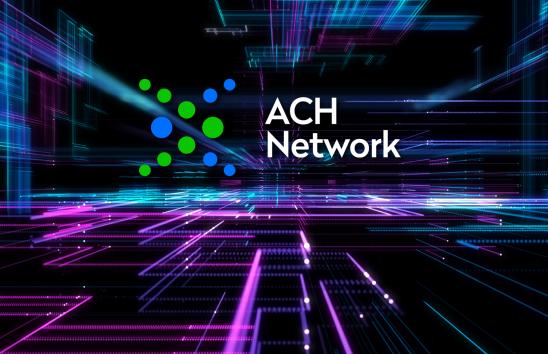Alliance Meeting Highlights: February Members' Meeting
More than 215 payments industry movers and shakers representing 112 member organizations – including financial institutions, solution providers, and financial regulators – met online to discuss, sometimes debate, and even network virtually. To keep the meeting fun and engaging, a game show theme was incorporated throughout.
The key topics on the agenda included politics and payments, Economic Impact Payments, digital currencies, AML and OFAC, and real-time wage access. The Alliance even invited in a workforce transformation expert to lead a discussion about what discuss "work" will look like in the near-future and post-pandemic.
This meeting summary will provide a quick digest of what was discussed in the sessions.
Deal or No Deal: Policies, Politics & Payments
How will Biden Administration priorities and Congress’ legislative agenda affect the payments industry? Government relations specialists provided unique insight during an interactive session about the players and issues that will shape the next four years and beyond. Hot issues include: instant payments and the ACH Network, as well as recent FedNow enhancements; the Washington tech agenda, including cyber- and data security, privacy, the digital divide, and regulating Big Tech. One thing is for certain, according to the panelists, Washington’s focus on a high-tech/fintech agenda as it relates to payments will continue, which led to one intriguing prediction from a panelist: “Soon, children will never know how to pay for something with cash.”
The Amazing Race: Faster Payments Edition
Same Day, real time and instant are all faster payments. But with new platforms and services entering the marketplace, what is the end game? Panelists from Nacha, the Fed and The Clearing House, representing their respective organizations' faster payments offering – Same Day ACH, FedNow, and RTP – weighed in. “We should reasonably expect adoption to take some time. Building volume takes time, but it’s worth the effort.” Another panelist was more optimistic, adding that instant payments could really catch on for consumers and businesses as early as 2025. Said another: “Success is people actually having access to [faster payments] capabilities. The goal is to get these tools in the end users’ hands. I’m already seeing some end users leverage them.”
Name That Tune: A Survey Of Stablecoins
How are stablecoins different from other types of cryptocurrencies? Panelists provided a broad overview of stablecoins and their potential impact on the payments industry, explaining that stablecoins are similar to bitcoin as far as technology, but are far more stable as far as value. For example, someone can program a stablecoin transaction using blockchain technology, but not have to worry about the volatility in pricing that comes with bitcoin. Stablecoin also has advantages over cash. “You can deliver money faster and safer and more efficiently,” said one panelist. “You don’t have that transparency with cash.” Panelists also discussed stablecoin use cases, benefits and risks, and recent market developments.
To Tell The Truth: Understanding Central Bank Digital Currencies
Virtual currencies promise lower fees, no borders, financial inclusion, privacy, micropayments and more. And some of these benefits may indeed be achievable. But before Central Banks consider adopting a virtual currency, there are questions that must be answered, including: What would a CBDC look like? “If a digital currency were introduced, it would have to be interchangeable [with existing currency]. It would be a complementary tool and not a replacement,” one panelist said. Another panelist agreed: “The two would have to coexist and serve as functional equivalents of each other.” More specifically, the Fed is looking at a wide variety of CBDC designs, including some digital forms of cash. All panelists agreed that CBDC is worth pursuing. “This is certainly a terrific opportunity for Central Banks to think about what the future of money looks like,” said one panelist.
The Match Game: Request For Payment And Bill Pay
Much has been said about the non-financial messages, like Request for Payment, that are available on the RTP network and their positive impact on products like Bill Pay. Panelists were all optimistic about the new opportunities to enable new services for billers and bill payers. But there is still some work to be done, including marketing the new products. “A lot of education has to take place, and not just to billers, but to financial institutions, too,” said one panelist. “There is a role the consumer banks can play to highlight these new opportunities.” There is also a need for the industry to collaborate, monitor adoption rates and other data. “It is important to share those learnings because we want this to work well,” said one panelist.
Fear Factor: AML And OFAC For 2021 – Out With The Old And In With The New
The Anti-Money Laundering Act of 2020 is the most comprehensive set of reforms to AML laws in a decade. The Act expanded whistleblower provisions and increased penalties, and explicitly expanded AML regulations to cryptocurrency. Yet cross-border remittances and the international gig economy present sanctions compliance challenges, even as there is a new focus on digital wallets and online commerce. Global financial institutions were hit with $10.4 billion in global fines and penalties related in 2020 up from $8.4 billion in 2019. Meanwhile, regarding OFAC, while the prior Administration focused on increasing sanctions on China, Venezuela, Cuba and Iran, with a new administration comes new priorities. The Biden Administration pledges to continue pressure on China and Venezuela, and increase pressure on Russia, among other changes.
Let’s Make A Deal: Stimulus Payments Rounds Two & Three
The first payment file for the second round of c (EIP2) was originated two days after the legislation was signed into law. This fast turnaround helped the Internal Revenue Service and the Bureau of Fiscal Service transfer funds to more than 140 million recipients in one month, but it was a bumpy road. Panelists from Nacha, the American Bankers Association and The Clearing House discussed the EIP2 rollout, with a view towards additional EIPs.
Be A Survivor, Not the Weakest Link: Changing The Face Of The Way We Work
A pandemic, political unrest, and instances of societal injustice have resulted in changes to how organizations work and collaborate as discussions have shifted to diversity, inclusion and remote workplaces. In this fully interactive discussion led by Melissa Swift, who was recently named one of 20 digital transformation leaders to follow on Twitter, meeting attendees discussed workforce transformation, including what the office will look like once companies begin returning after being fully remote, and the risk of employee disengagement. Swift says the “future of work” consists of what organizations want, what society expects from organizations, and what each individual wants. “Everyone has to chart their own personal future of work,” she said.
Win, Lose or Draw: Real-Time Wage Access
Earned wage access products, which allow employees to access wages they have earned before their official payday, could be the solution for workers who need flexible tools to help them better manage their money. While the benefits of EWA to employees may be obvious, there are also benefits for employers, including: improved workforce productivity; savings in hiring, training and recruitment, especially for seasonal and part-time roles; and reduced payroll expenses, the panelists said. One point of agreement is that because “there are social cushions in Europe” that don’t exist in other countries, the lack of access to cash and financial services is a worsening issue for low-wage and hourly workers in the U.S. and other parts of the world.
Register for May 25-26 Alliance Meeting Visit Project Teams




